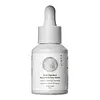What's inside
What's inside
 Key Ingredients
Key Ingredients

 Benefits
Benefits

 Concerns
Concerns

No concerns
 Ingredients Side-by-side
Ingredients Side-by-side

Water
Skin ConditioningAcetyl Hexapeptide-8
HumectantCaprylyl Glycol
EmollientEthylhexylglycerin
Skin ConditioningGlycerin
HumectantPropanediol
SolventEthoxydiglycol
HumectantSodium PCA
HumectantSodium Hyaluronate
HumectantBifida Ferment Lysate
Skin ConditioningChamomilla Recutita Flower Extract
MaskingPotassium Sorbate
PreservativeSodium Benzoate
MaskingGluconolactone
Skin ConditioningTetrapeptide-21
Skin ConditioningButylene Glycol
HumectantAcetyl Glucosamine
Skin ConditioningInulin
Skin ConditioningHydroxypropyl Cyclodextrin
MaskingCyclodextrin
AbsorbentPolydextrose
HumectantResveratrol
AntioxidantPanthenol
Skin ConditioningAllantoin
Skin ConditioningSodium Gluconate
Skin ConditioningXylitylglucoside
HumectantAnhydroxylitol
HumectantXylitol
HumectantAscorbyl Glucoside
AntioxidantEctoin
Skin ConditioningWater, Acetyl Hexapeptide-8, Caprylyl Glycol, Ethylhexylglycerin, Glycerin, Propanediol, Ethoxydiglycol, Sodium PCA, Sodium Hyaluronate, Bifida Ferment Lysate, Chamomilla Recutita Flower Extract, Potassium Sorbate, Sodium Benzoate, Gluconolactone, Tetrapeptide-21, Butylene Glycol, Acetyl Glucosamine, Inulin, Hydroxypropyl Cyclodextrin, Cyclodextrin, Polydextrose, Resveratrol, Panthenol, Allantoin, Sodium Gluconate, Xylitylglucoside, Anhydroxylitol, Xylitol, Ascorbyl Glucoside, Ectoin
Water
Skin ConditioningTranexamic Acid
AstringentAlpha-Arbutin
AntioxidantPhenoxyethanol
PreservativeCitric Acid
BufferingSodium Hyaluronate
HumectantCaffeine
Skin ConditioningCeramide EOP
Skin ConditioningCeramide Ns
Skin ConditioningCeramide NP
Skin ConditioningCeramide As
Skin ConditioningCeramide AP
Skin ConditioningLaminaria Digitata Extract
Skin ProtectingCetyl-Pg Hydroxyethyl Palmitamide
Skin ConditioningAloe Barbadensis Leaf Extract
EmollientHydroxyethylcellulose
Emulsion StabilisingXanthan Gum
EmulsifyingPanthenol
Skin ConditioningSodium Metabisulfite
AntioxidantEthylhexylglycerin
Skin ConditioningSodium Gluconate
Skin ConditioningMaltodextrin
AbsorbentWater, Tranexamic Acid, Alpha-Arbutin, Phenoxyethanol, Citric Acid, Sodium Hyaluronate, Caffeine, Ceramide EOP, Ceramide Ns, Ceramide NP, Ceramide As, Ceramide AP, Laminaria Digitata Extract, Cetyl-Pg Hydroxyethyl Palmitamide, Aloe Barbadensis Leaf Extract, Hydroxyethylcellulose, Xanthan Gum, Panthenol, Sodium Metabisulfite, Ethylhexylglycerin, Sodium Gluconate, Maltodextrin
Ingredients Explained
These ingredients are found in both products.
Ingredients higher up in an ingredient list are typically present in a larger amount.
Ethylhexylglycerin (we can't pronounce this either) is commonly used as a preservative and skin softener. It is derived from glyceryl.
You might see Ethylhexylglycerin often paired with other preservatives such as phenoxyethanol. Ethylhexylglycerin has been found to increase the effectiveness of these other preservatives.
Panthenol is a common ingredient that helps hydrate and soothe the skin. It is found naturally in our skin and hair.
There are two forms of panthenol: D and L.
D-panthenol is also known as dexpanthenol. Most cosmetics use dexpanthenol or a mixture of D and L-panthenol.
Panthenol is famous due to its ability to go deeper into the skin's layers. Using this ingredient has numerous pros (and no cons):
Like hyaluronic acid, panthenol is a humectant. Humectants are able to bind and hold large amounts of water to keep skin hydrated.
This ingredient works well for wound healing. It works by increasing tissue in the wound and helps close open wounds.
Once oxidized, panthenol converts to pantothenic acid. Panthothenic acid is found in all living cells.
This ingredient is also referred to as pro-vitamin B5.
Learn more about PanthenolThis is the synthetic salt of gluconic acid, a form of PHA and mild exfoliant.
It is mainly used to stabilize oil and butter formulations from going bad. Sodium gluconate is a humectant, pH regulator, and chelating agent.
Chelating agents help neutralize unwanted metals from affecting the formulation.
Sodium gluconate is water-soluble.
Learn more about Sodium GluconateSodium Hyaluronate is hyaluronic acid's salt form. It is commonly derived from the sodium salt of hyaluronic acid.
Like hyaluronic acid, it is great at holding water and acts as a humectant. This makes it a great skin hydrating ingredient.
Sodium Hyaluronate is naturally occurring in our bodies and is mostly found in eye fluid and joints.
These are some other common types of Hyaluronic Acid:
Learn more about Sodium HyaluronateWater. It's the most common cosmetic ingredient of all. You'll usually see it at the top of ingredient lists, meaning that it makes up the largest part of the product.
So why is it so popular? Water most often acts as a solvent - this means that it helps dissolve other ingredients into the formulation.
You'll also recognize water as that liquid we all need to stay alive. If you see this, drink a glass of water. Stay hydrated!
Learn more about Water